Voyo V3 is one of the first Intel Atom x7-Z8700 based mini PC announced so far, comes with 4GB RAM, and a 128 GB SSD. It was announced at the very beginning of the year, at the time it was not shipping yet. The good news is that the device is now available, as GearBest sent me one sample for review. I’ll start by checkout the hardware inside and out today, before publishing a full review in a few days.
Voyo V3 Unboxing
I’ve received the computer in its retail packaging.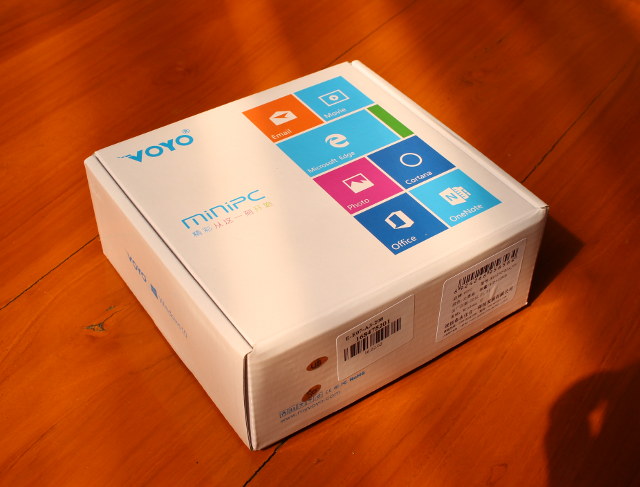
Everything is in Chinese, and the model is called MiniPC-Box_V3. A 12V/2A power supply, mini HDMI to HDMI cable (80 cm), a warranty card, a “qualified certificate”, and MiniPC-Box_V3 user’s manual are also included in the package.
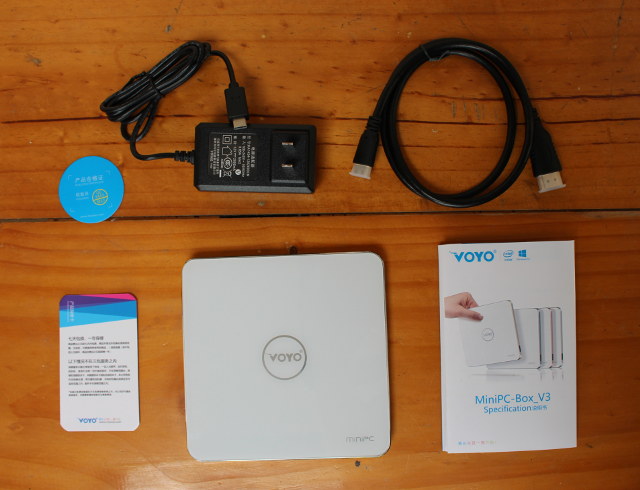
There’s something different with the power supply: it features a USB Type-C connector since that’s what the box is powered with.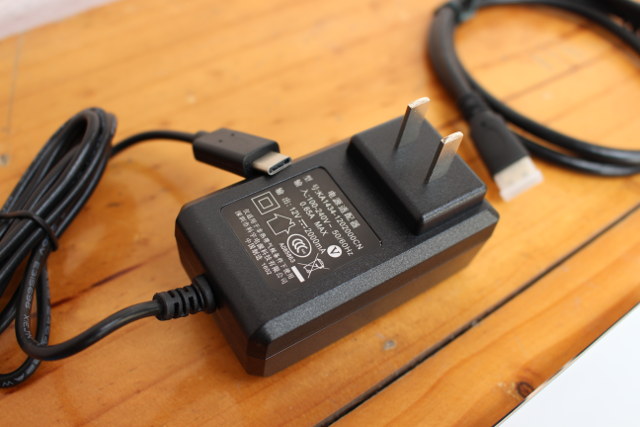
Voyo V3 is ultra thin, even thinner than Voyo V2 since it lacks an Ethernet port. The front panel features the power button with a Blue LED, one USB 2.0 port can be found on the side, and most ports can be seen on the rear panel: USB type C port for power, mini HDMI port, micro SD card slot, two USB 3.0 ports, and a 3.5mm audio jack.
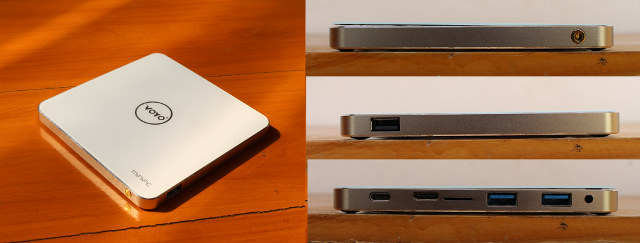
You’ll also notice the top cover is lifting a little, which does not bode well for build quality.
Voyo V3 Teardown
I was taken by surprised when I tore down Voyo V2, and I broke the top cover made of glass. I now have learned how to open it properly, and Voyo V3 has a similar case design, so I started by slide a thin card under the glass cover.
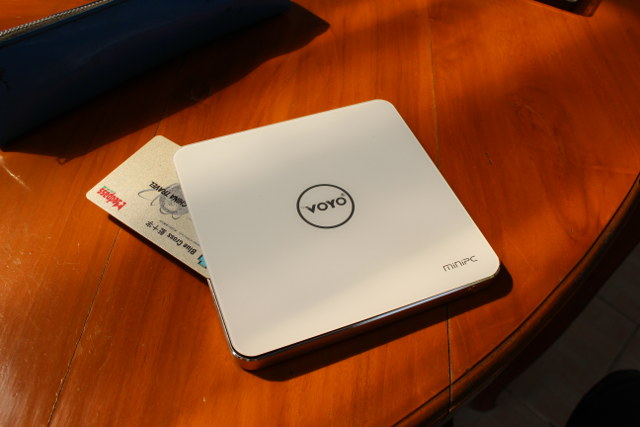 The glass cover came relatively easily, but there’s not much to see here, except the dirty job reworking the plastic around the power button.
The glass cover came relatively easily, but there’s not much to see here, except the dirty job reworking the plastic around the power button.
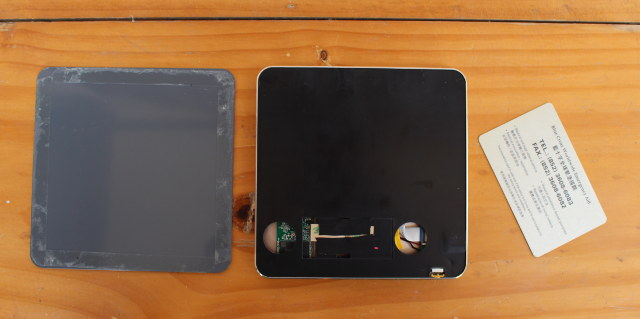 The next step is to turn the device around, remove four stick pads, and loosen four screws.
The next step is to turn the device around, remove four stick pads, and loosen four screws.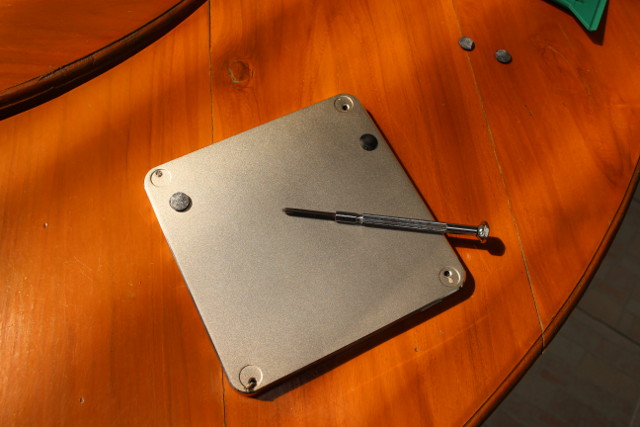 The board then come out relatively easily with the help on the two holes on the black plastic cover.
The board then come out relatively easily with the help on the two holes on the black plastic cover.
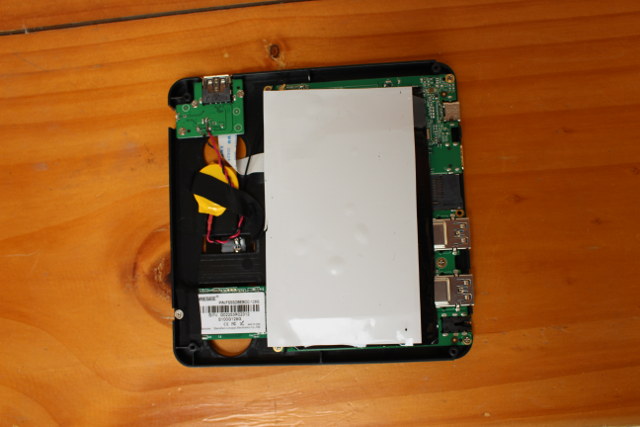
We can only see the RTC battery, and Foresee FSSSDBEBCC-128G 128GB M.2 SSD made by Shenzhen Longsys Electronics with theoretical 514MB/s and 158MB/s read and write speeds according to the product page.
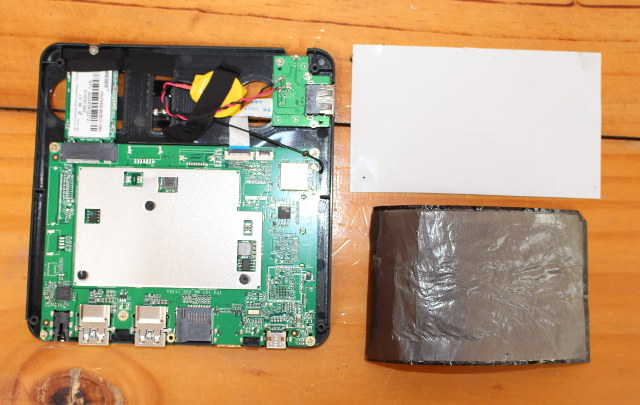
The main board is covered by a white thermal pad, as well as another black layer, basically the same way as they did for Voyo V2.
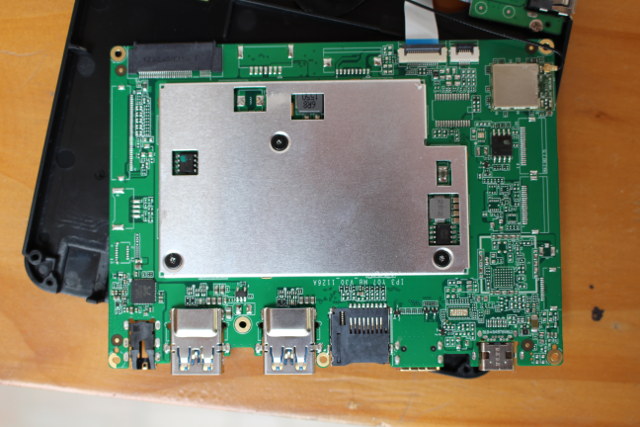
There’s a marking on the main board that reads “IP3_Y07_MB_V30_1126A”, but sadly I could not remove the metal shield since the screws were too small for any of my screwdrivers. The only noticeable chip on this side is Realtek ALC5645 audio codec. The 802.11n WiFi module is also covered by a metal shield, and the module marking reads NF H2 3801_OV1, which does not exactly give a useful clue about the actual wireless chip used. Nevertheless that means this more powerful than usual Cherry Trail mini PC only connectivity option is dual band 802.11n, no 802.11ac, no Ethernet.
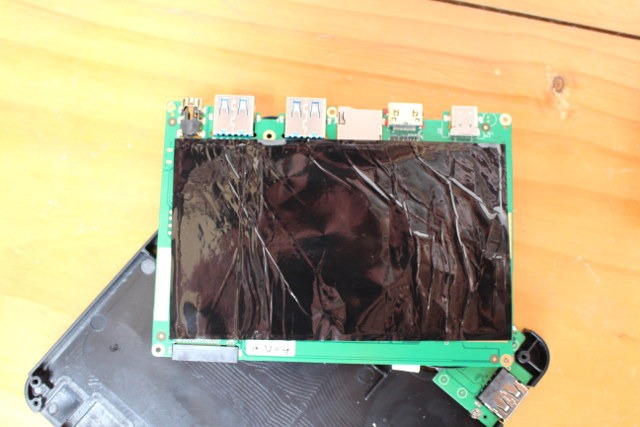 I’ve also remove five more screws to check the other side of the board, and there’s not much to see on that side, and there aren’t any ICs on this side.
I’ve also remove five more screws to check the other side of the board, and there’s not much to see on that side, and there aren’t any ICs on this side.
That’s all for today. I’d like to thank Gearbest for sending Voyo V3 for review, and you can consider purchasing from the company for $209.99 including shipping with coupon GBV3. Alternatively, you could also purchase on GeekBuying ($214.99), Amazon US or Banggood, but currently the price on the last two shops is much higher.

Jean-Luc started CNX Software in 2010 as a part-time endeavor, before quitting his job as a software engineering manager, and starting to write daily news, and reviews full time later in 2011.
Support CNX Software! Donate via cryptocurrencies, become a Patron on Patreon, or purchase goods on Amazon or Aliexpress




